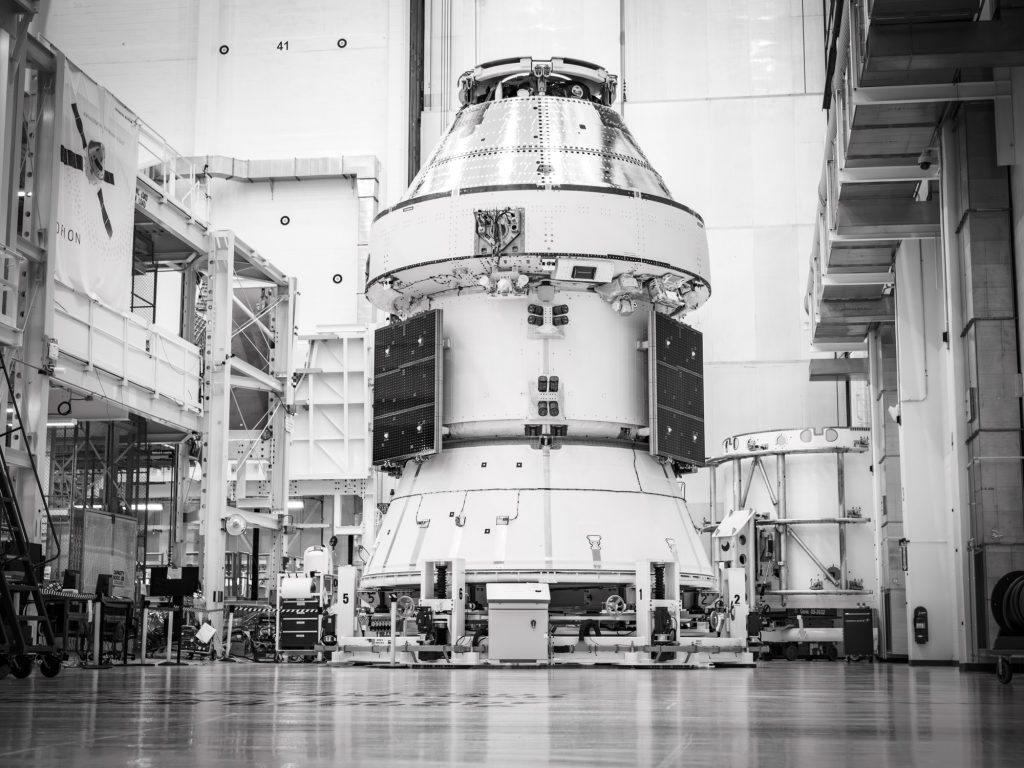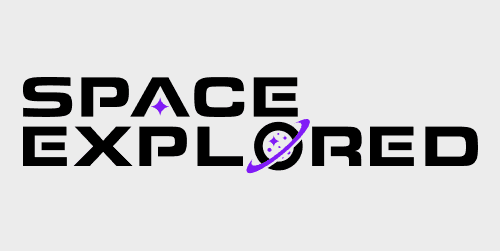
NASA’s Exploration Ground Systems (EGS) team moves quickly to prepare Artemis 2 for launch in early 2026. In March, EGS successfully stacked the Space Launch System (SLS) core stage onto the mobile launcher between the two solid rocket boosters (SRBs). The Launch Vehicle Stage Adapter (LVSA) is now part of the core stage. Alongside core stage integration, NASA has steadily progressed on the Orion spacecraft, preparing it for its first crewed mission around the Moon and back.
Progress so far
EGS began 2025 with strong momentum. Booster stacking began last year and is now complete. During this phase, NASA transported the SLS core stage from the Michoud Assembly Facility in Louisiana to the Kennedy Space Center’s (KSC) Vehicle Assembly Building (VAB). Once inside High Bay 2, the core stage was positioned vertically in a work stand, allowing engineers full access to prepare it for stacking and flight.
After booster stacking was completed, EGS moved the core stage into the VAB’s central transfer aisle. Final checks were performed there before teams lifted the stage and precisely placed it between the two SRBs.
Recently, NASA mated the LVSA—a cone-shaped structure—to the top of the core stage. The LVSA connects the core stage to the liquid hydrogen tank on the Interim Cryogenic Propulsion Stage (ICPS). It also provides aerodynamic shielding for the liquid oxygen tank and the RL-10 rocket engine housed inside.
With this milestone, NASA has once again stacked the tallest rocket stage ever assembled. Standing at 239.5 feet, the SLS core stage with LVSA surpasses SpaceX’s Super Heavy booster, which measures 232 feet. Notably, for this accolade, the LVSA remains attached throughout the mission and is not jettisoned, making it part of the SLS first stage.
What’s next for SLS?
Next in line for stacking is the ICPS, followed by the Orion Stage Adapter. The ICPS, built by ULA, arrived at KSC in early March. It is currently undergoing hypergolic fueling at the Multi-Payload Processing Facility (MPPF). Once fueling concludes, teams will transfer the stage to the VAB for integration.
The ICPS is based on the Delta Cryogenic Second Stage, previously used on Delta III and Delta IV rockets. ULA has manufactured three ICPS units for NASA, one for each of SLS Block 1’s planned flights.
Following the ICPS, NASA will install the Orion Stage Adapter. This structure connects the ICPS to the Orion spacecraft and holds several CubeSats for deployment. The adapter remains at NASA’s Marshall Space Flight Center in Alabama but will soon ship to KSC for stacking.
Orion spacecraft assembly continues

NASA has made significant strides on Orion. In early March, the spacecraft received its solar array wings. The next steps include installing its four service module fairings, which cover the gap between the Orion Stage Adapter and the Crew Module Adapter.
Once these fairings are in place, Orion will move to the MPPF to fuel its Service Module. After fueling, it will receive four fairing panels that shield the spacecraft from the exhaust of the Launch Abort System (LAS) tower.
This LAS marks a major milestone—it will be the first fully functional abort system to fly into space. Previous Orion missions, such as Exploration Flight Test-1 in 2014 and Artemis 1 in 2022, featured only partially active LAS towers. In those cases, only the jettison motors were functional; the main abort motors were inert. To date, Orion’s abort system has flown only fully functional twice: during Pad Abort Test-1 in 2010 and Ascent Abort-2 in 2019. The latter demonstrated Orion’s ability to escape at peak aerodynamic stress during launch.
Once the LAS is installed, the Orion spacecraft will move to the VAB for final stacking atop the SLS. This assembly will mark NASA’s first fully integrated crewed Moon rocket since the Saturn V in 1972.
Looking ahead to launch
After stacking, NASA will conduct a series of integrated system tests and checkouts. If all goes according to plan, the agency could roll the rocket to Launch Complex 39B by late summer for its Wet Dress Rehearsal (WDR). This critical test includes fueling the rocket and practicing the countdown sequence.
However, challenges remain. Florida’s hurricane season begins in June and could impact the rollout timeline. During Artemis 1 preparations in 2022, NASA left the rocket on the pad during Hurricane Nicole only because the storm weakened before landfall. A stronger system would force the rollback of Artemis 2 to the VAB for protection.
NASA’s ability to maintain pace will depend on overcoming technical hurdles associated with launching crew aboard a new rocket and spacecraft. The last NASA crew launch was STS-135 in 2011. The last time NASA tested a new crewed launch system and spacecraft was STS-1 in 1981—more than four decades ago. As well as NASA’s ability to work around Florida’s chaotic weather.
FTC: We use income earning auto affiliate links. More.




Comments